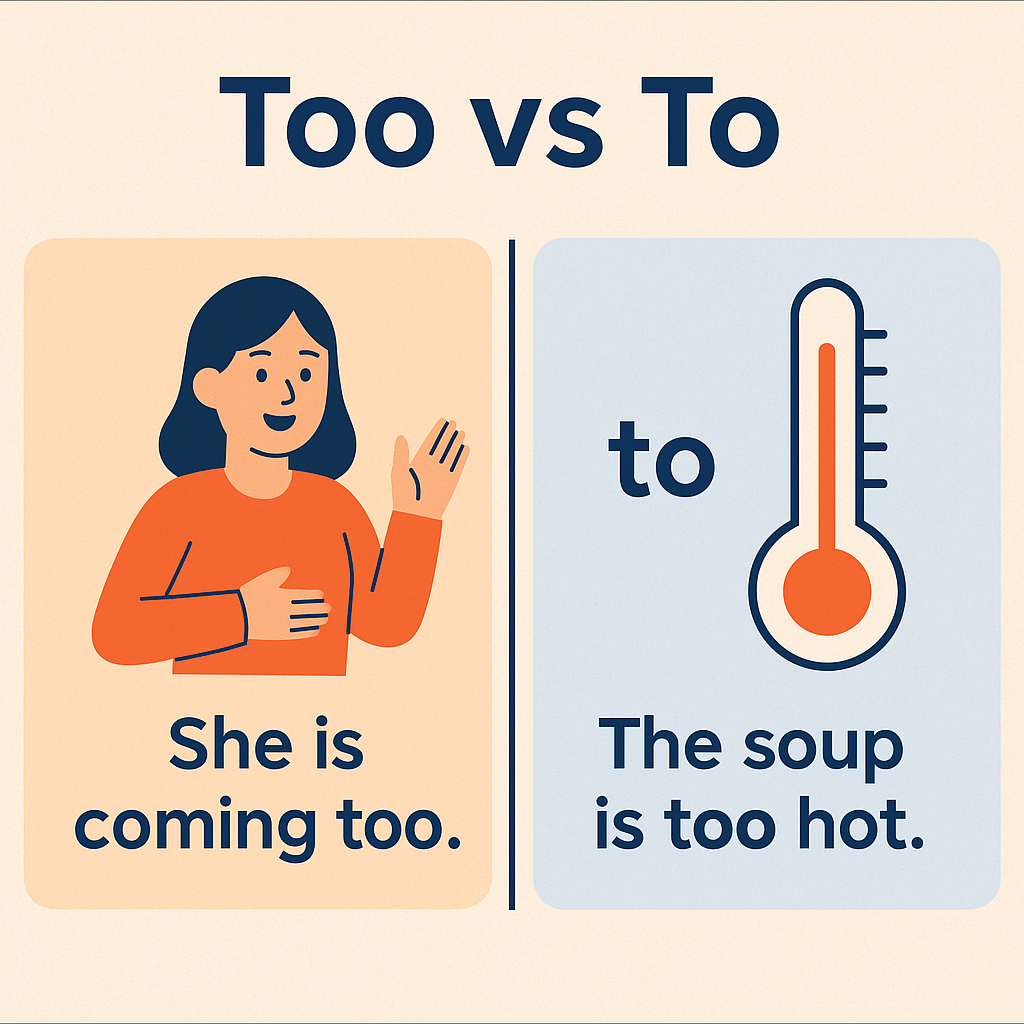Too vs To

English learners often struggle with too vs to, two small but essential words that serve very different purposes. Misusing them can make your sentences confusing or grammatically incorrect. In this post, you’ll learn how to use too vs to correctly, spot common mistakes, and remember the difference easily.
The Meaning of “Too”
“Too” is an adverb. It usually means:
- Also (e.g., She is coming too.)
- Excessively (e.g., The soup is too hot.)
The Meaning of “To”
“To” is a preposition or part of an infinitive verb.
- Preposition: She went to the store.
- Infinitive: He likes to dance.
Common Mistakes with Too vs To
- I want too go home.
I want to go home. - I am to tired to study.
I am too tired to study. - Can I come to?
Can I come too?
A simple mix-up like that can alter the meaning of your sentence entirely.
Memory Tips for Too vs To
🔸 Too has an extra “o” think of it as “extra” meaning also or excessively.
🔸 Use to when you’re pointing somewhere (to the mall) or linking with a verb (to eat).
When in doubt, say the sentence aloud. If it sounds like “also” or “very,” you’re probably looking for too.
More Examples of Too vs To in Sentences
- She is going to the event, and I’m going too.
- It’s too cold to swim today.
- I need to talk to you about something important.
- You’re speaking too loudly in the library.
Still Confused About Too vs To?
You’re not alone. This common confusion is addressed in various grammar guides like this helpful Grammarly: Too vs. To—What’s the Difference?
For more grammatical tips in our blog, check
Final Thoughts
Mastering the use of too vs to takes practice, but once you understand their different roles, your writing becomes much clearer and more effective. Keep using the memory tricks and watch out for those common errors!